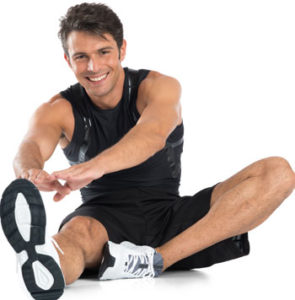I have been going in road races for many years.  When I first started out, maybe the first 3 to 4 years, I always noticed a lot of the runners doing warm up runs. I didn’t have the guts. I was always afraid that the time spent would take away from my performance. After some time I decided that I would try it. After all, I’m usually early to most everything, it’s rare that I arrive at a race less than an hour before the gun goes off. So I had the time anyway. What I found was that instead of taking the first ½ mile to mile of the race before I could settle into a stride because my legs hadn’t “woken up” yet. The warm up run got them in race shape and when the event started I could hit my stride without wasting any mileage. The warm-up run would be considered a dynamic stretch.
When I first started out, maybe the first 3 to 4 years, I always noticed a lot of the runners doing warm up runs. I didn’t have the guts. I was always afraid that the time spent would take away from my performance. After some time I decided that I would try it. After all, I’m usually early to most everything, it’s rare that I arrive at a race less than an hour before the gun goes off. So I had the time anyway. What I found was that instead of taking the first ½ mile to mile of the race before I could settle into a stride because my legs hadn’t “woken up” yet. The warm up run got them in race shape and when the event started I could hit my stride without wasting any mileage. The warm-up run would be considered a dynamic stretch.
I train some very active people.
All of which are very tuned in to their bodies. They follow a very disciplined training program, are aware of what their nutrition needs are, including hydration. So it always surprises me when I find out that they don’t stretch. Whether it’s before their activity or after. This usually comes to light when they are getting or headed towards an injury. Also as part of the time they spend with me, we go through some type of stretch before and after our workout. It’s especially at this time when I see how tight they are. And at that point ask them the same question I asked before, “Are you stretching?” to which I usually get a mumbled response. So here we go……
There are 2 types of stretching, dynamic and static.
Dynamic stretching is done while in movement. Static stretching is done by putting the body into a position and holding it there for a period of time. And yes there is a specific time in the workout for both of these.
Dynamic stretching should be used as part of your warm up routine. After completing 5 – 10 minutes of a cardio routine which will elevate your heart rate and get your muscles warmed up by increasing blood flow you’ll want to perform some dynamic stretches. Examples can be found here.
Static stretching is best performed at the end of your workout. An example of this would be a quadriceps stretch where you grab your ankle and pull it back as close to your buttocks as you can. And then hold it there for about 30 seconds. An example of these can be found here. Static stretching should be part of your recovery. The process of recovery will be more efficient when the body is more fluid. You just spent a lot of time doing an activity that had a lot of repetitive actions. The joints and muscles that are taking the brunt of this need to be worked in an alternate way. Otherwise you’re setting yourself up for overuse injuries. And the looser you are for your next workout the more efficient you will be. If you are too tight before your next workout you’re going to be spending way too much time warming up instead of getting right to it.
Studies listed here, show that performance increased when using dynamic stretching before an activity, and showed no benefit when using static stretching prior to the activity.
So dynamic stretching prior to an activity and static stretching after.